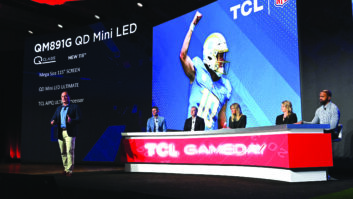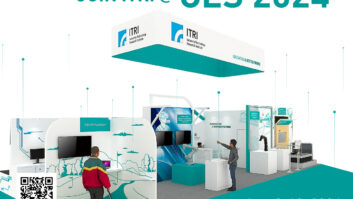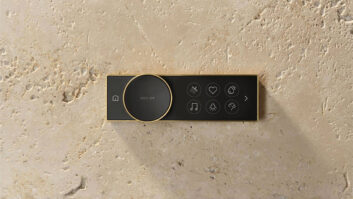Momentum seems to be building among flat-panel TV manufacturers to offer improved picture quality from LCD panels to provide a less expensive and more easily manufactured alternative to pricey new OLED TVs, which many see as the future standard TV technology.
The results of these efforts are expected to be on display at International CES in January.
The alternative nascent technology, called quantum dot, isn’t exactly new — Sony introduced Triluminous Display TVs in 2013 using QD Vision’s Color IQ quantum-dot technology at its core — but it is now gaining momentum with other leading LCD panel manufacturers as well.
Among them is flat-panel TV giant Samsung, which marketed a 55-inch OLED set last year, before opting to temporarily step away from the category as it works on developing a new printing method for OLED production.
Meanwhile, LG continues to roll out bigger and better versions of its WRGB-based technology as the only current large-format OLED display maker.
LG’s WRGB OLED technology approach appears to be steadfastly delivering improvements in production yields, but LG has also shown in the past that it has the desire and wherewithal to compete with virtually any display technology the market demands, so it wouldn’t be surprising to see LG also introduce a quantum-dot-enhanced set in the near future.
Meanwhile, according to reports out of Seoul, South Korea, on Monday, Samsung Electronics’ TV business head, Kim Hyun-seok, said his company will be sticking to its current OLED TV strategy for this year and next.
That means you should expect to hear more from the company about quantum-dot technology as an enhancement to current LED LCDs. The technology involves incorporating a film of tiny light-emitting crystals into regular LCDs.
Sony’s Triluminous Display TVs use quantum-dot technology from QD Vision called Color IQ. In that approach blue LEDs, which are traditionally coated with yellow phosphors to create white light, sends blue light from the blue LEDs through a Color IQ optical element containing red and green quantum dots. This enables the blue LED to both produce blue light and energize red- and green-emitting quantum dots to produce red and green light.
The benefit is said to be a more OLED-like wider color gamut compared to conventional LCD TVs.













